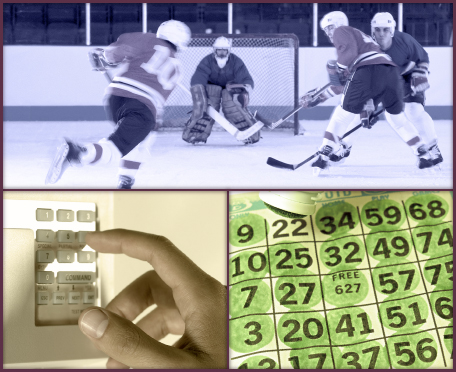Module 3 Summary
| Site: | MoodleHUB.ca 🍁 |
| Course: | Math 30-2 SS |
| Book: | Module 3 Summary |
| Printed by: | Guest user |
| Date: | Wednesday, 24 December 2025, 4:57 PM |
Description
Created by IMSreader
1. Module 3 Summary
Module 3 Summary
In this module you learned how to determine the number of ways in which events can occur. You investigated the use of permutations and combinations in determining such things as the possible match-up of teams for the playoffs, the number of codes that can be used to open a garage, and the probability of winning a favourite game.

hockey: Comstock/Thinkstock, alarm number pad: Brand X Pictures/Thinkstock, bingo sheet: iStockphoto/Thinkstock
In this module you investigated the following question: How are counting methods used to solve problems involving codes and passwords?
Following are some of the key ideas that you learned in each lesson.

Hemera Technologies/
AbleStock.com/Thinkstock
In Lesson 2 you learned to apply and simplify factorial notation. Factorial notation represents the product of consecutive natural numbers.
n! = n(n − 1)(n − 2)(n − 3)…(3)(2)(1)
You used this knowledge to solve equations involving the use of permutation and combination formulas. You applied factorial notation to problems such as determining the starting line-up for a baseball team.
In Lesson 3 you learned that permutations are an arrangement of items when order is important.
![]()

Stockbyte/Thinkstock
You applied your knowledge of permutations to problems where order mattered, such as a horse race.
In Lesson 4 you learned that combinations are a selection of items where order is not important.
![]()

Medioimages/Photodisc/
Thinkstock
Using combinations, you determined the number of chords that could be played on a piano.
In Lesson 5 you investigated probability problems involving counting methods. You analyzed problems to determine which counting method would be most appropriate in determining the probability of an event happening.
In the Module 3 Project you applied your knowledge to solve a mystery and to create your own mystery.
In Module 4 you will explore how some problems can be modelled and solved using polynomials.